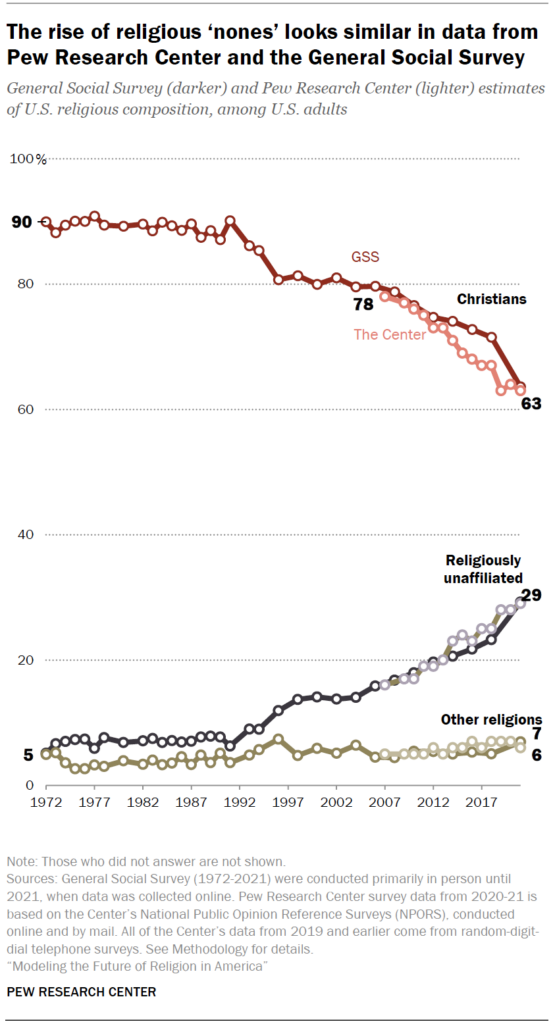In 1972, when the GSS first began asking Americans, “What is your religious preference?” 90% identified as Christian and 5% were religiously unaffiliated. In the next two decades, the share of “nones” crept up slowly, reaching 9% in 1993.
“But then disaffiliation started speeding up – in 1996, the share of unaffiliated Americans jumped to 12%, and two years later it was 14%. This growth has continued, and 29% of Americans now tell the GSS they have “no religion.”
“Pew Research Center has been measuring religious identity since 2007 using a slightly different question wording – “What is your present religion, if any?” – as well as a different set of response options. Since 2007, the percentage of adults who say they are atheist, agnostic or “nothing in particular” in the Center’s surveys has grown from 16% to 29%. During this time, the share of U.S. adults who identify as Christian has fallen from 78% to 63%.
“There are many theories on why disaffiliation sped up so much in the 1990s and how long this trend might continue. For example, some scholars contend that secularization is the result of increasing “existential security” – as societal conditions improve and scientific advances allow people to live longer lives with fewer worries about meeting basic needs, they have less need for religion to cope with insecurity (or so the theory goes).
“Others say that in the U.S., an association of Christianity with conservative politics has driven many liberals away from the faith. Still other theories involve declining trust in religious institutions, clergy scandals, rising rates of religious intermarriage, smaller families, and so on.”
A deeper look and analysis is at the Pew Research website:
https://www.pewresearch.org/religion/2022/09/13/how-u-s-religious-composition-has-changed-in-recent-decades/

![]()